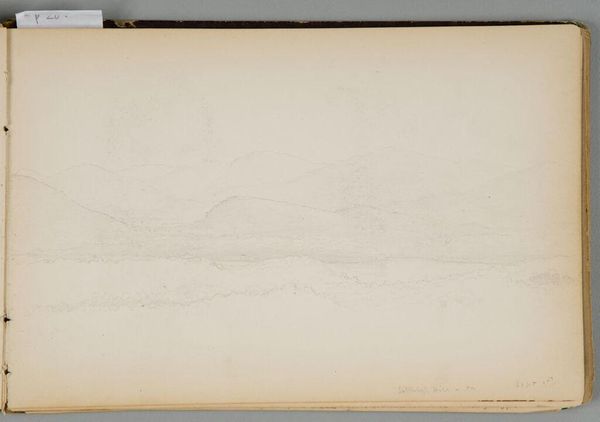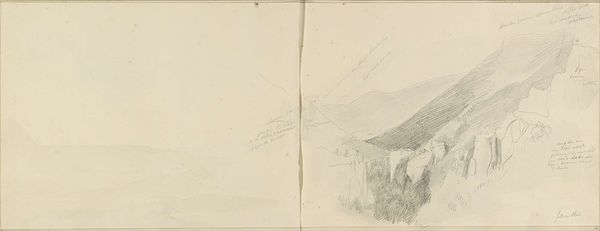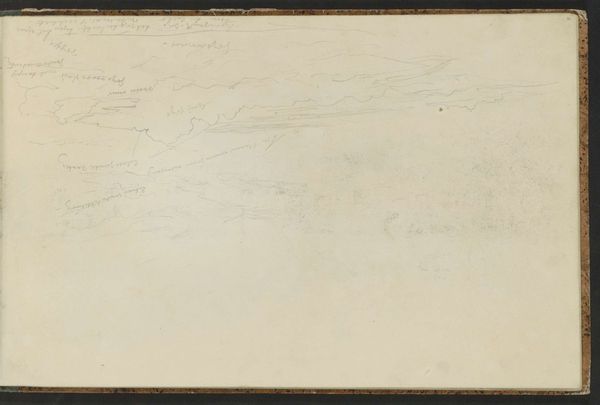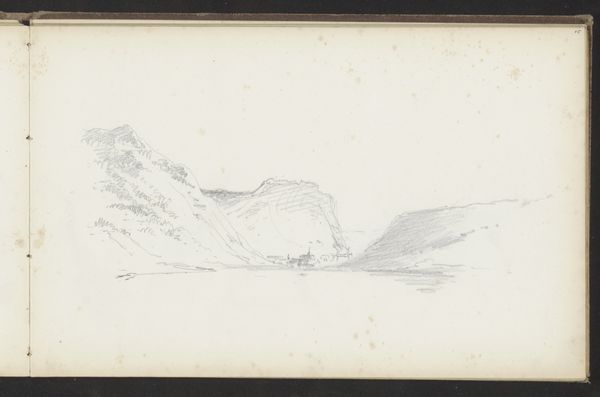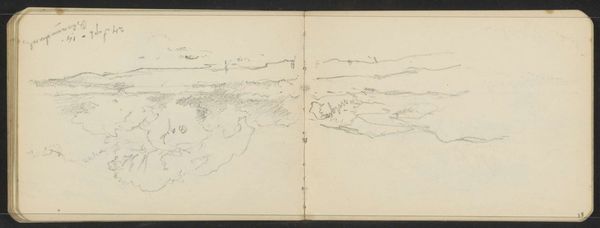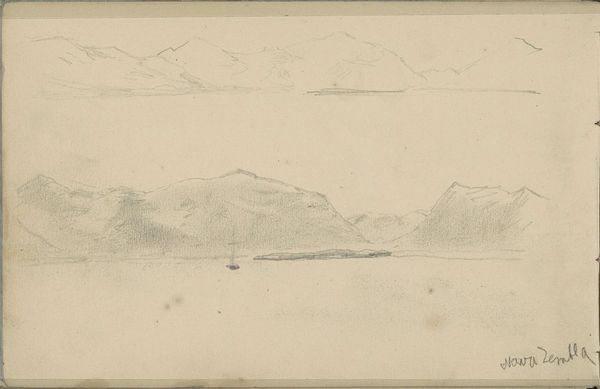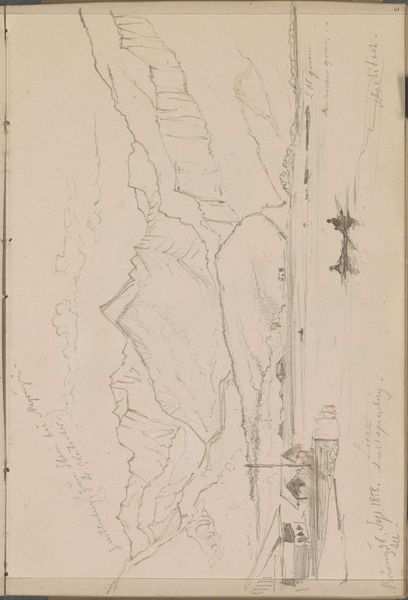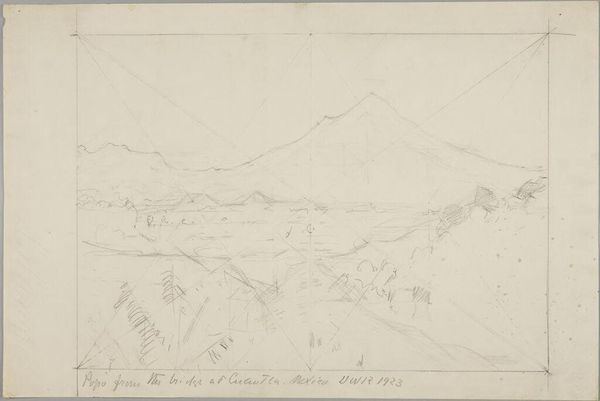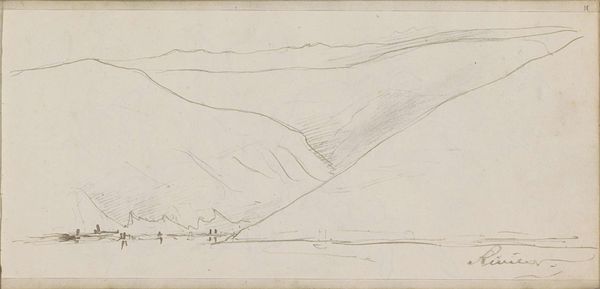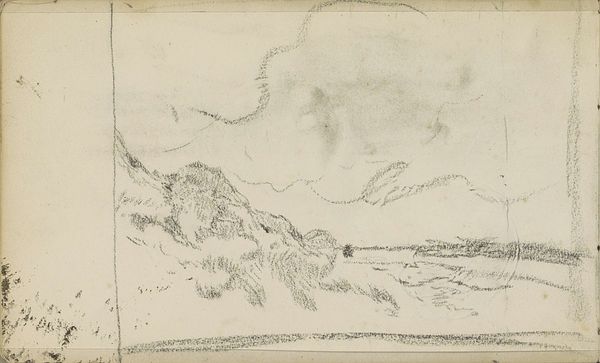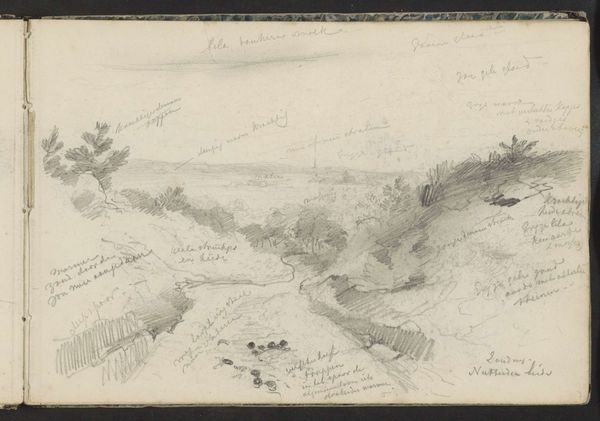
#
amateur sketch
#
light pencil work
#
incomplete sketchy
#
personal sketchbook
#
road
#
rock
#
ink drawing experimentation
#
pen-ink sketch
#
sketchbook drawing
#
watercolour illustration
#
sketchbook art
#
watercolor
Copyright: Rijks Museum: Open Domain
Curator: Here in Gallery 12, we have a subtle yet intriguing landscape sketch entitled "Steil pad langs rotsen en bergen bij Marienthal," or "Steep Path along Rocks and Mountains near Marienthal," created around 1840 by Johannes Tavenraat. It’s part of a sketchbook, executed with delicate pencil and watercolor washes. Editor: My immediate impression is of something quite fleeting, a moment captured in the artist's travels. The monochrome palette and the open composition, which uses an internal framing technique of the spine binding two different drawing sides, creates an interesting contrast of something quite raw. It looks unfinished. Curator: Indeed, that's characteristic of many sketches, especially those meant for personal use. Tavenraat's landscapes often served as preparatory studies for larger, more elaborate paintings, reflections on his travels throughout the Rhineland and further afield in Europe. What's fascinating is that this intimate glimpse into his creative process offers insights into the social conventions surrounding landscape painting at the time. This reflects an aesthetic sensibility linking travel, art making, and class status in Dutch society. Editor: And the romantic undertones are clear, right? This pursuit of nature and travel embodies freedom. There’s this undeniable quest to experience the sublime, with nature here functioning as a sanctuary, contrasting the emerging realities of the industrial revolution and class consciousness. Curator: Absolutely. We see the rise of landscape art during this period as a conscious effort to depict an ideal of nature that might stand in opposition to what was going on politically. Think of the Barbizon school in France. There's definitely something about going back to simpler things through these raw works. However, a drawing like this makes the final painting seem quite bourgeois by comparison, when framed for polite society. Editor: It would have been quite unusual at the time to show this drawing to the public as art in itself; you are spot-on with the contrast to high society! Still, to me it speaks volumes about our present need for connection to the landscape. Perhaps there’s an argument to be made about the political ramifications for increased public funding for the arts. Curator: Certainly. And considering that this piece resides in the Rijksmuseum's collection today invites us to explore how perceptions of artistic value evolve over time and within our changing socio-political context. The meaning embedded in this sketch reflects a need for simpler ways. Editor: Indeed. A testament to its quiet power, a lasting power. Thank you. Curator: Thank you.
Comments
No comments
Be the first to comment and join the conversation on the ultimate creative platform.
